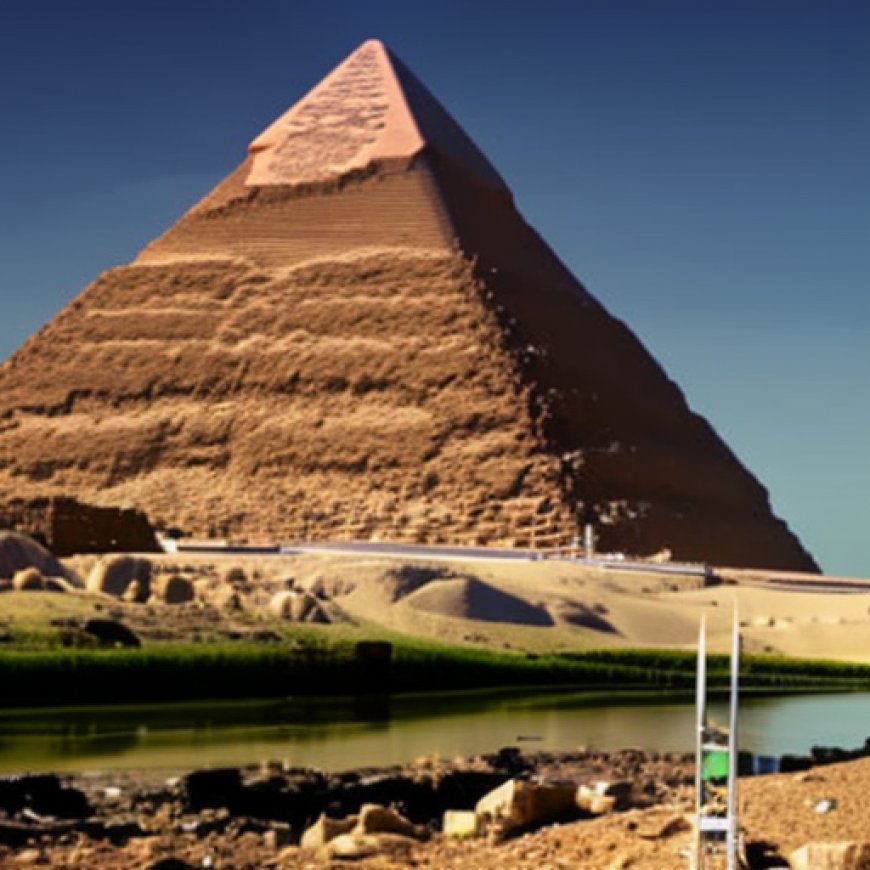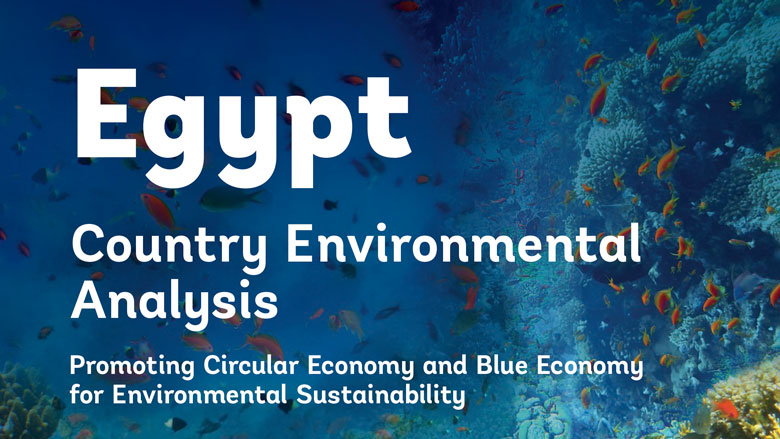Egypt – Country Environmental Analysis : Promoting Circular Economy and Blue Economy for Environmental Sustainability


Strategic Guidance for Egypt’s Sustainable Development

Over the last two decades, Egypt has made significant efforts towards achieving sustainable and resilient development. The Ministry of Environment has played a crucial role in enhancing the governance framework and implementing new policy instruments to address the growing environmental challenges. This report aims to provide strategic guidance to the Egyptian government in tackling these environmental challenges, while promoting green, resilient, and inclusive growth and generating new employment opportunities.
Priority Areas for Sustainable Development
-
Circular Economy for Industrial Pollution and Waste Management
The report identifies the circular economy as a key priority area for addressing industrial pollution and waste management. By adopting circular economy principles, Egypt can minimize waste generation, promote recycling and reuse, and reduce the environmental impact of industrial activities. This will contribute to the achievement of Sustainable Development Goal (SDG) 12: Responsible Consumption and Production.
-
Blue Economy with a Focus on Sustainable Coastal Zone Management
The report emphasizes the importance of sustainable coastal zone management as part of Egypt’s blue economy agenda. By implementing effective strategies and policies, Egypt can protect its coastal ecosystems, preserve biodiversity, and ensure the sustainable use of marine resources. This aligns with SDG 14: Life Below Water.
-
Environmental Governance
The report highlights the significance of strengthening environmental governance in Egypt. By improving institutional frameworks, enhancing regulatory mechanisms, and promoting stakeholder engagement, Egypt can ensure effective environmental management and enforcement of environmental laws. This contributes to the achievement of SDG 16: Peace, Justice, and Strong Institutions.
-
Innovative Green Financing Mechanisms
The report suggests the adoption of innovative green financing mechanisms to support the circular economy and the blue economy. By mobilizing financial resources and attracting investments, Egypt can accelerate the transition towards sustainable and environmentally friendly economic activities. This supports SDG 17: Partnerships for the Goals.
The analysis conducted for this report involved a comprehensive review of existing analytical work on environmental management in Egypt, as well as an examination of current environmental regulations, strategies, reports, and public data. Furthermore, consultation workshops, meetings with various stakeholders including government representatives, non-governmental organizations, research institutions, private sector entities, and key experts were conducted to validate and refine the findings.
SDGs, Targets, and Indicators
1. Which SDGs are addressed or connected to the issues highlighted in the article?
- SDG 9: Industry, Innovation, and Infrastructure
- SDG 12: Responsible Consumption and Production
- SDG 14: Life Below Water
- SDG 17: Partnerships for the Goals
The article mentions that the analysis aims to help Egypt achieve green, resilient, and inclusive growth while creating new jobs. This aligns with SDG 9, which focuses on promoting sustainable industrialization, fostering innovation, and building resilient infrastructure. The article also highlights the priority areas of circular economy for industrial pollution and waste management, and blue economy with a focus on sustainable coastal zone management. These areas are directly related to SDG 12, which aims to ensure sustainable consumption and production patterns, and SDG 14, which focuses on conserving and sustainably using the oceans, seas, and marine resources. Lastly, the article mentions the need for innovative green financing mechanisms, which relates to SDG 17 that emphasizes the importance of partnerships and financial support for sustainable development.
2. What specific targets under those SDGs can be identified based on the article’s content?
- SDG 9.4: Upgrade infrastructure and retrofit industries to make them sustainable
- SDG 12.4: By 2020, achieve the environmentally sound management of chemicals and all wastes throughout their life cycle
- SDG 14.1: By 2025, prevent and significantly reduce marine pollution of all kinds
- SDG 17.17: Encourage and promote effective public, public-private, and civil society partnerships, building on the experience and resourcing strategies of partnerships
Based on the article’s content, the specific targets that can be identified are upgrading infrastructure and retrofitting industries to make them sustainable (SDG 9.4), achieving environmentally sound management of chemicals and wastes throughout their life cycle (SDG 12.4), preventing and significantly reducing marine pollution (SDG 14.1), and promoting effective partnerships for sustainable development (SDG 17.17).
3. Are there any indicators mentioned or implied in the article that can be used to measure progress towards the identified targets?
Yes, the article mentions several indicators that can be used to measure progress towards the identified targets:
- Improvement in governance framework and policy instruments for environmental challenges
- Implementation of circular economy practices for industrial pollution and waste management
- Adoption of sustainable coastal zone management practices in the blue economy
- Establishment of innovative green financing mechanisms
These indicators can be used to assess the progress made in upgrading infrastructure, achieving environmentally sound management of chemicals and wastes, reducing marine pollution, and promoting effective partnerships.
4. SDGs, Targets, and Indicators
| SDGs | Targets | Indicators |
|---|---|---|
| SDG 9: Industry, Innovation, and Infrastructure | 9.4: Upgrade infrastructure and retrofit industries to make them sustainable | – Improvement in governance framework and policy instruments for environmental challenges – Implementation of circular economy practices for industrial pollution and waste management |
| SDG 12: Responsible Consumption and Production | 12.4: By 2020, achieve the environmentally sound management of chemicals and all wastes throughout their life cycle | – Improvement in governance framework and policy instruments for environmental challenges – Implementation of circular economy practices for industrial pollution and waste management |
| SDG 14: Life Below Water | 14.1: By 2025, prevent and significantly reduce marine pollution of all kinds | – Improvement in governance framework and policy instruments for environmental challenges – Adoption of sustainable coastal zone management practices in the blue economy |
| SDG 17: Partnerships for the Goals | 17.17: Encourage and promote effective public, public-private, and civil society partnerships, building on the experience and resourcing strategies of partnerships | – Establishment of innovative green financing mechanisms – Improvement in governance framework and policy instruments for environmental challenges |
Copyright: Dive into this article, curated with care by SDG Investors Inc. Our advanced AI technology searches through vast amounts of data to spotlight how we are all moving forward with the Sustainable Development Goals. While we own the rights to this content, we invite you to share it to help spread knowledge and spark action on the SDGs.
Fuente: worldbank.org

Join us, as fellow seekers of change, on a transformative journey at https://sdgtalks.ai/welcome, where you can become a member and actively contribute to shaping a brighter future.







